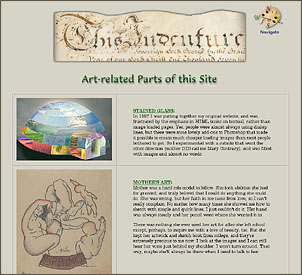in time to go to Paris to study painting. He there was a pupil of Picot and of the Swiss painter
Grosclaude, and under them became an accomplished technician, while he developed a power as a colorist quite uncommon with painters
of his nationality.
Albert Aublet is a Parisian, a pupil of Jacquand and of Gerome, and made the
regular course of a student at the School of Fine Arts. A visit to Constantinople next added subjects
of Oriental life to his repertory, and led to the completion, among others, of his "
Turkish Woman at the Bath,"
whose appearance at the Salon in 1883 was received with great applause and materially added to his
fame and prosperity.
At the outpost of an Arab camp, the favorite slave girl of the Sheik, with his
pet hound, the guardians of his tent, are on the outlook for their master's return from a hunting excursion. The artist, Gaston C. Saintpierre,
is a native of Nimes, and studied art in Paris under Cogniet and Jalabert.
He made various excursions into Algiers and the deserts of North Africa, from which he returned
with a valuable collection of motives. He received his first medal in 1868, and the Legion
of Honor in 1881. The story of Blaise Bukovoc has been given in detail in a
previous part of this work. His "White Slave" represents one of the Greek or
Circassian girls who were frequently to be found in Turkish harems, into which they came as spoils
of war. The legend of Lorelei, the siren of the Rhine, is one of those which
the Germans adopted from classical antiquity and adapted to local surrounding and circumstances.
William Kray represesents the lovely and loveless enchantress seated on the
craggy summit of the cliff, which is nearly five hundred feet above the level of the stream, bathed in the beams of the moon,
and by her alluring glances inviting the hapless boatmen to their destruction.
"Fatima"
Back Forward
Chapter 7 Text
Blaise Vlaho Bukovac





![]() Copyright © 2007, Mary S. Van Deusen
Copyright © 2007, Mary S. Van Deusen